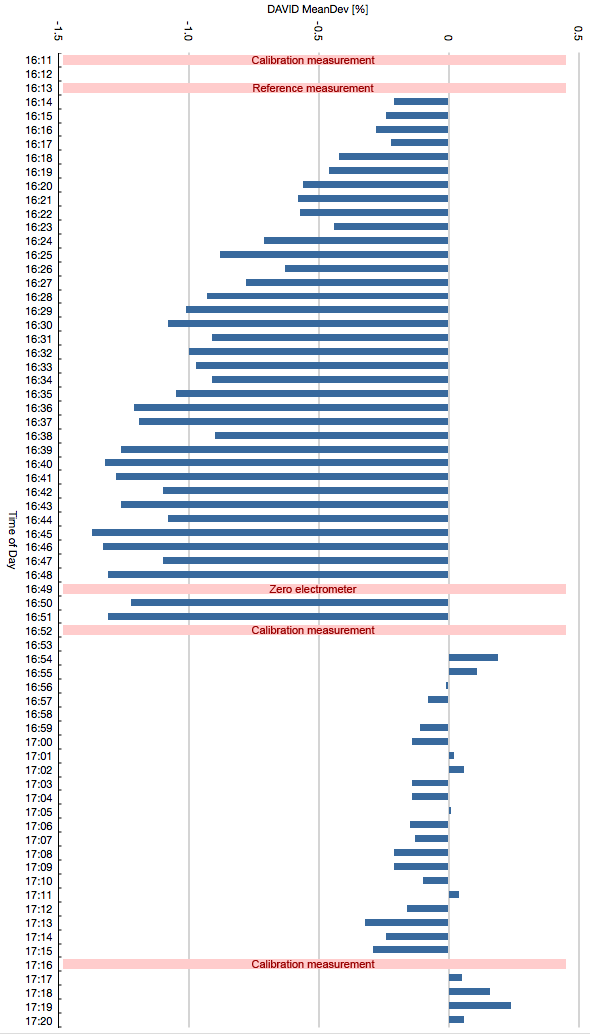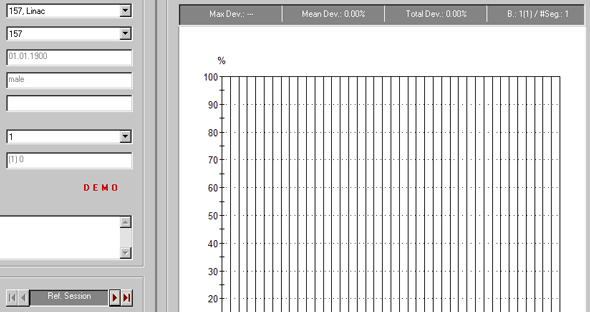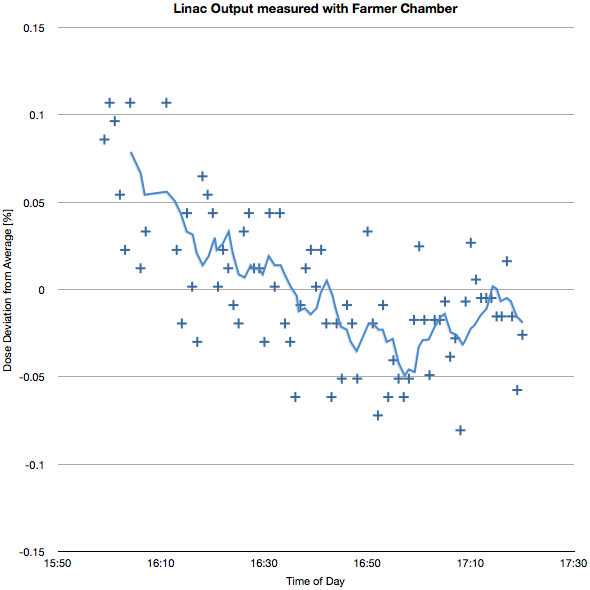At 15:59, DAVID was installed on the linac, switched on and allowed to warm up for 6 minutes, then zeroed (the manuals recommend a warmup time of 5 minutes).
A few minutes later, a series of measurements began, one measurement per minute. To make the setup as simple as possible, calibration field, reference field and session field were identical: 6 MV, field size 40x40 cm, 100MU, dose rate 300MU/min.
Click on the image to see the full data table:
DAVID drifted to negative deviations beween 16:14 (session 1) and 16:48 (session 35). At 16:49, DAVID was zeroed which had no effect. At 16:52, the calibration measurement was repeated. During the next few sessions, dose deviations were small, but in the following 20 minutes, DAVID seems to drift again. At 17:16, another calibration was performed.
The values plotted are the mean deviations for all channels. Not visible in the graph is the fact that the channels that are closer to the center have larger negative deviations, while the channels in the periphery hardly drift. The dose profile somehow looks like a rope bridge. This can be seen in the animation which runs from the reference measurement up to session 37 (see the session counter in the lower left corner):
Linac output was monitored independently, to rule out any drift from this side. A Farmer chamber was placed below DAVID in a solid RW3 phantom at SSD100 and dmax. The independent monitoring started at 15:53. The following graph shows that linac output was within ±0.1% of the average during the whole session (1.5 hours). The data plotted is the last column of the data table. The line is a moving average over 6 periods:
Summary
Warmup behaviour was studied with the simplest of all possible fields: a static open 40x40 cm 6MV field, which is also recommended for calibration of DAVID. The field was treated once per minute. Beam delivery took 20 seconds (100MU at dose rate 300), the remaining 40 seconds were used for recording data, taking screenshots, moding up the linac again, etc.
It looks like DAVID needs more than 5 minutes to stabilize. The first zero electrometer was 6 minutes after power-on. But zeroing doesn't seem to have much influence on drift anyway: the second zeroing, at 16:49, didn't do anything.
Calibration seems to be more important. First calibration was at 16:11, 12 minutes after power-on. Within the first 45 minutes, the central channels drift to nearly -2%. A recalibration at 16:52, nearly 1 hour after power-on, removed most of the drifting. Will DAVID be stable for the rest of the day? We do not know.
Another open question is the origin of the "rope bridge" behaviour. Could it be a temperature effect?


